In honour of St Patrick's Day today, we are celebrating each of the 9 traditional dog breeds of Irish origin!
Kerry Beagle
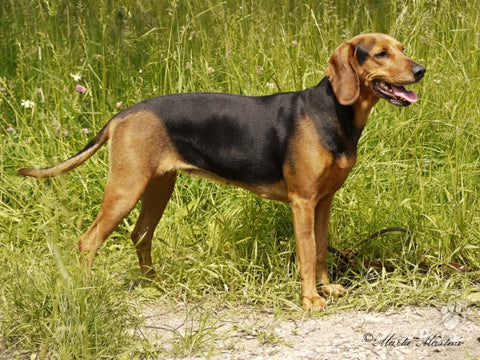
Origin: This dog is believed to be one of Ireland's oldest dog breeds, and despite its name, bears no connections to the Beagle. Instead, the name is thought to come from the Irish word 'beag', meaning small.
Temperament: The Kerry Beagle is known to be very friendly and good natured, and can get along with children and other family pets. They are very energetic and require lots of exercise, and due to their original role in hunting have a high prey drive.
Purpose: Stag hunting dog
Did you know? There are only low numbers of this breed left in existence, from its steady decline in over the last hundred years. One major pack of Kerry Beagles remains in Ireland today.
Glen of Imaal Terrier

Origin: Of Irish descent, this breed took its name from the Glen of Imaal in Country Wick Low. Its job was to hunt out rats, badgers and other vermin around farms. As a small, stocky breed it can withstand the harsh terrain of the valleys and has excellent endurance.
Temperament: As they are a working Terrier, the Glen of Imaal breed is intent and active, with a courageous heart never willing to give up the chase. However as a family pet, they are quiet and gentle, with calm manners perfect for families with older children.
Purpose: Controlling vermin & sturdy farm work
Did you know? These dogs have previously been used as turnspit dogs; in the days of roasting game over a firepit, the Glen of Imaal could walk on a treadmill for hours slowly turning and evenly cooking the meat.
Irish Terrier
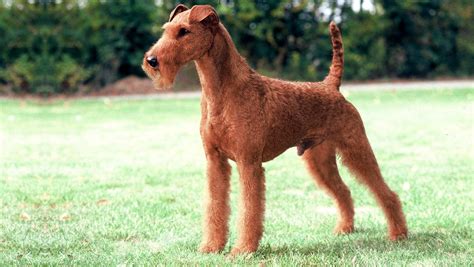
Origin: Of the four Terrier breeds, the Irish Terrier is one of the oldest- dating back to the late 1800s. They are the only Terrier with the iconic all-red coat.
Temperament: Irish Terriers are deeply loyal to their owners, ready to take on any threats that may come their way. Created to be a guard dog, hunter and companion, this spirited breed can sometimes be difficult to live with. Due to their sheer intelligence, Irish Terriers are independent and need both physical and mental stimulation. They are incredibly friendly and love to be around people.
Purpose: Vermin control
Did you know? In World War I Irish Terriers distinguished themselves as messenger dogs, receiving numerous awards and achievements for loyalty and their undoubted bravery. The Commandant of the British War Dog School wrote of them "Many a soldier is alive today through the efforts of one of these Terriers... They are extraordinarily intelligent, faithful and honest".
Kerry Blue Terrier
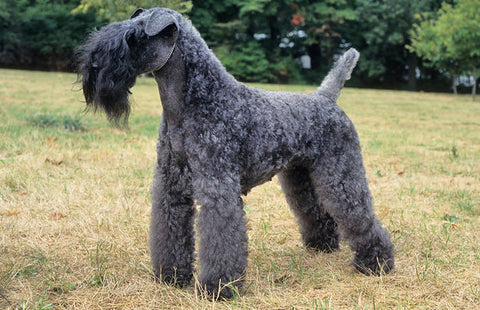
Origin: The Kerry Blue is the national Terrier of Ireland- named after the county. They are known for hunting small animals and birds, as the name Terrier derives from the Latin Terra, meaning 'earth'. Kerry Blue Terriers are also known to make excellent herding dogs, as for them size is no issue.
Temperament: Incredibly bright and loyal, the Kerry Blue loves to be wherever their owner is. This does mean that they are not suited to being left alone for long periods, and enjoy being the centre of attention. Pride plays an important role in this breed- they do not typically accept rough play, or teasing.
Purpose: All- round working dog
Did you know? Kerry Blue Terriers do not drop their fur, meaning that they need to be regularly groomed. This type of breed is much better for anyone with allergies, as they do not shed hair.
Soft Coated Wheaten Terrier
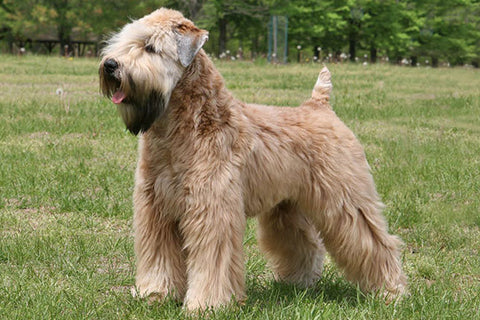
Origin: By now, you may be starting to see a familiarity between our Irish breeds! Wheaten Terriers were also bred to control vermin, as well as herding livestock and keeping guard. They have previously been known as the "poor mans' working dog" as they had so many job roles on working farms.
Temperament: Their charming nature makes Soft Coated Wheaten Terriers a popular choice across the world, and have earned a reputation of being trustworthy, affectionate and reliable dogs. Their intelligence means they are quick learners, but can pick up bad habits as well as good! Unlike some other Terriers, these Wheaties (as they are affectionately known) make excellent pets for first time owners, due to their willingness to please and entertain.
Purpose: All- round working dog
Did you know? Traditionally, Soft Coated Wheaten Terrier's had their tails docked. However tail- docking is now illegal in the UK with the exception of some working dogs or health issues as discussed by vets.
Irish Water Spaniel

Origin: With stark resemblances to the Portuguese Water Dog, it has been said that the Irish Water Spaniel originates from when foreign fishermen brought their dogs over in the late 1800s. Bred for the first time in 1862, they quickly became popular due to their versatile natures.
Temperament: Forming strong bonds with their families, Irish Water Spaniels do not cope well being left alone. Similarly with other spaniels, this breed needs an abundance of both mental and physical stimulation, however their endurance and stamina make excellent hunting dogs. Irish Water Spaniels are also known for their sense of humour and playfulness, making them a real pleasure to be around.
Purpose: Hunting dog
Did you know? The Irish Water Spaniel has a distinctive tail, commonly referred to as a 'rat tail'. Their waterproof coats are an added unique quality.
Irish Wolfhound
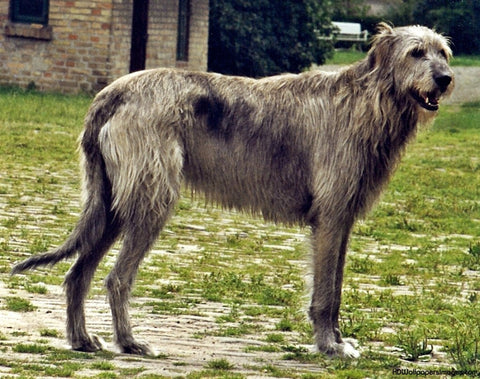
Origin: Probably the most well-known of all the Irish breeds, is the Irish Wolfhound. Written accounts of their existence date all the way back to the 5th Century, and they had many purposes including livestock protection, hunting and were used in wars. Irish Wolfhounds were held in such high esteem that they were often given as royal gifts.
Temperament: The Irish Wolfhound is a real gentle giant, making excellent pets for families with younger children. Their pace is never rushed, so can sometimes take their time when being recalled. An intelligent breed, they are not known for barking and are incredibly sociable with both humans and other pets.
Purpose: Deer and wolf hunting dog
Did you know? While many people think the Great Dane is the largest breed, it is actually the Irish Wolfhound that stand as the biggest dog breed in the world!
Irish Red Setter
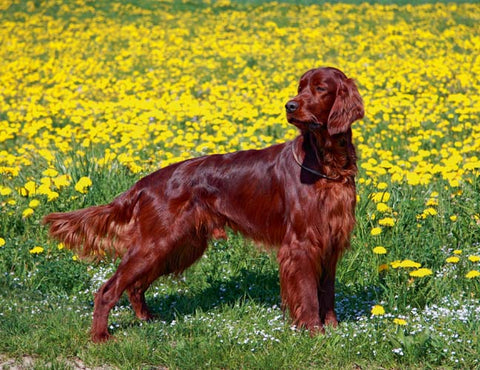
Origin: With their rich chestnut coloured silky coat, Irish Red Setters are easily distinguished. One of the older setter breeds, they were originally bred by crossing Setting Spaniels and Scottish Setters. Their main role was for hunting, due to their incredible scent detection. Early references to this breed are made in the early 1600s, and by the 17th Century Setters were one of the most popular breeds.
Temperament: Lively and full of energy, these Setters need lots of exercise. They love nothing more than to be surrounded by people, and are very affectionate towards their families. Easy to train, due to their eagerness to please, but with their mischievous nature can be a little headstrong. The Irish Setter makes a great companion for younger children, however their excitability can make play a little boisterous.
Purpose: Hunting dog
Did you know? The first Irish Red Setter Club was established in 1882, thanks to The Earl of Enniskellen who helped to develop the breed's striking red colour.
Irish Red and White Setter
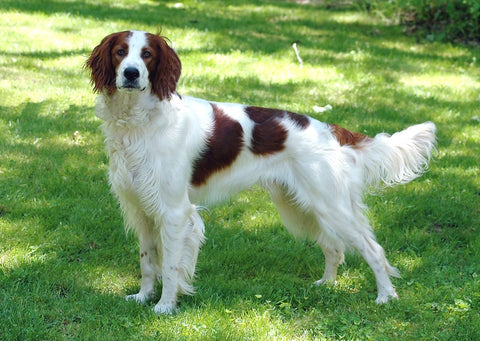
Origin: The original Irish Setter, the Red and White Irish Setter also dates back to the 17th Century. They were the preferred Setter for hunting as their colouring made them easy to spot. Due to the increasing popularity of the Red Setter in the 1800s this breed declined in numbers.
Temperament: The Red and White Irish Setter are lively and sociable animals, with an eager to please both in the home in and the field/ working environments. This Setter needs both mental and physical stimulation in abundance, as boredom can lead to naughty behaviour with this intelligent breed. A great pet to be around children, the Red and White would make a poor guard dog because of their incredibly friendly nature.
Purpose: Gun dog
Did you know? The breed nearly became extinct in the 1920s due to the rising popularity in the Irish Red Setter. However thanks to the founding of the Irish Red and White Club in the 1940s, their programme revived the breed.

0 comments